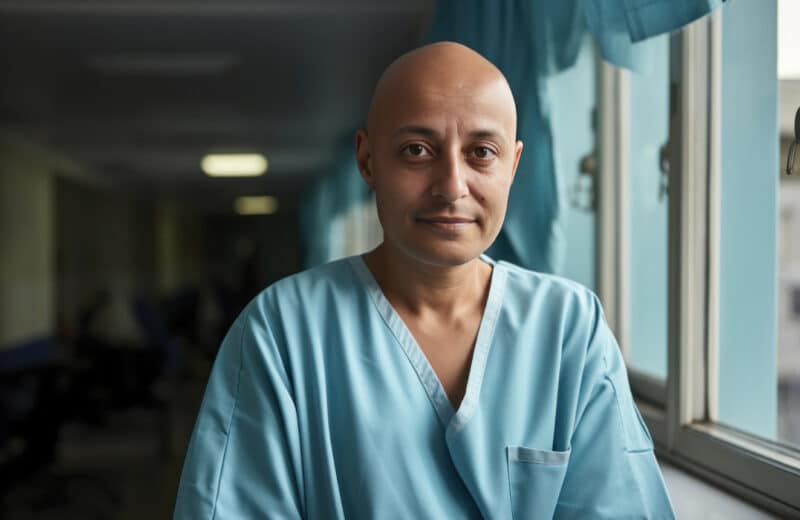More noninvasive technology really getting at brain tumors
The brain is the home for so much of our central being: It’s the place that houses our thoughts and emotions, stores our dearest memories and controls all of our behavior. So what happens when this home is invaded by the likes of a cancerous tumor?
According to the National Cancer Institute, approximately 13,000 of the 22,000 people in the United States diagnosed with brain and other nervous-system cancers in 2010 did not survive. With so much at stake, advancement in the treatment of brain tumors is of utmost importance.
Enter procedures such as Gamma Knife surgery, which experts say is far less ominous than it might sound. “The word ‘knife’ was probably a misnomer, but the people in Sweden who developed the technology were aiming at an audience of surgeons. That’s why they used the word in the descriptive title,” says Dr. Leonard Cerullo, a neurosurgeon at NorthShore University HealthSystem Neurological Institute, who is a pioneer in the use of this noninvasive treatment for brain tumors.
The blades of this treatment are actually beams of gamma radiation that come together at the tumor to decrease its size and dissolve it. “The treatment is done without ever opening the skin, the skull or the coverings of the brain, without anesthetic and without the risk of infection or blood loss and without in-patient hospitalization,” Cerullo says.
“The computer technology and mechanics give a lot of radiation to a very discrete area without damaging the surrounding tissues. It was initially used for benign tumors, but the treatment was so successful not only [for] the short term but [also for the] long term that it is now used on metastatic tumors, which are more common than any other kind of tumor of the brain and tend to multiply. You can treat all of the tumors at one time in an outpatient setting. The Gamma Knife has really revolutionized the treatment of brain tumors.”
Significant improvements have also been made in the imaging technology used to diagnose brain tumors such as the magnetic resonance (MR) scan. “We can sometimes distinguish between what is a tumor and what is not a tumor, [or] what is scar tissue, which eventually culminates in the decision [of] whether or not treatment is appropriate,” Cerullo says. He also makes mention of a clinical trial procedure that is underway to determine whether or not brain scans should be performed on women with breast cancer. “About 30 percent of people with cancer will develop a metastatic brain tumor,” he says. “We want to find out the cost-effectiveness and medical appropriateness of adding a routine brain scan [for cancer patients]. It is important to detect the tumor before it causes symptoms, so treatment can be given before the patient has any brain damage. Once the symptoms have occurred, we can stop the tumor from growing, but we can’t undo the damage.”
In 2006, the University of Illinois Medical Center (UIMC) started participating in an international trial to test an innovative, noninvasive therapy to treat patients with recurrent glioblastoma multiforme, the most deadly form of intracrancial brain tumors. The device, NovoTTF-100A, uses low-intensity alternating electrical fields, called tumor treatment fields (TTFs), applied directly to the surface of the head.
Dr. Herbert Engelhard, an expert in tumor cell biology, is an associate professor of neurosurgery and site investigator for the trial at the university. “The theory is that the tumor-treating fields cause the growing cancer cells to die rather than divide, but don’t affect healthy cells, which have different electrical properties,” he says.
Daniel Torres, the father of four children, who was diagnosed with glioblastoma in 2004 and unsuccessfully underwent three rounds of surgery, radiation therapy, radiotherapy and chemotherapy, was the first patient in North America to be enrolled in the trial at UIMC. The NovoTTF electrodes were placed on his shaved head and connected to a portable device powered by batteries, which he wore 22 hours a day.
“The main reason he wanted to try the treatment was because he wanted to stay alive to see our children grow up,” his wife Sylvia Torres says. “Thanks to this treatment, his tumor is shrinking.”
Others like Torres can now reap the benefits of this research. In April 2011, the U.S. Food and Drug
Administration approved the NovoTTF-100A System to treat adults with glioblastoma multiforme that is recurrent or progressive after chemotherapy or radiation therapy. UIMC is now participating in a new trial of the device, which doctors such as Engelhard hope will yield an even greater outcome.
“Instead of using the device as a last-ditch effort, we are using it right after the patient receives radiation therapy and chemotherapy to see if using it earlier will show even better results,” he says.
Daniel Torres, for one, is still wearing his device. “He can carry it around in something that looks like a book bag, so he can be active,” Sylvia Torres says. “When he was diagnosed, we didn’t know how long he would stay with us. [Now] we are so very grateful.”
Published in Chicago Health Winter 2012














